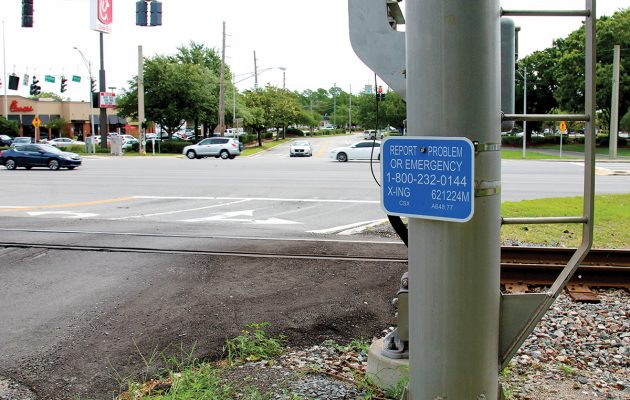Railroad crossing repairs coordinated with city, FDOT

With more than 30,000 railroad crossings on 21,000 miles of tracks to manage in the United States – including 235 crossings in Duval County – the CSX tie teams are kept busy 24/7.
Unless there are incidents that may require immediate attention at a railroad crossing, maintenance is done on a cycle, according to a CSX spokesperson. This past year, the tie teams worked on crossings along Roosevelt Boulevard/U.S. 17 from San Juan Avenue down to Orange Park.
More recently, two crossings near the Rail Yard District were repaired, to the relief of motorists who regularly cross the tracks at King Street and Stockton Street south of Beaver Street. “They were terrible forever! It is amazing how this can totally improve a day!” gushed one commenter on social media.
Thanks to the recently formed Rail Yard District Business Council, who had advocated with CSX corporate leaders to escalate the repairs, the two crossings now smooth the way from Riverside to Beaver Street, nucleus of the new business district.
Some crossings are owned by CSX, others by municipalities, which may receive state funding for repairs. When state highways and roadways cross over railroad tracks, Florida Department of Transportation collaborates with the respective railways to maintain and upgrade them for safety and efficiency.
In one year the CSX tie team will repair specific groups of crossings that are due, but may skip some to create a better detour, said the spokesperson.
“By grouping the crossings, crew can repair a few at a time, usually within 24 to 72 hours, then move down the line to the next group,” said the representative. “There are many factors that can delay or skip a crossing repair, including materials, crew or weather.”
CSX works closely with FDOT and the municipalities to create detours that will impact drivers the least amount of time. Routine crossing repairs include removing asphalt, replacing cross-ties, and re-paving.
Temporary repairs and emergency repairs can be done in response to complaints, but all are evaluated, then prioritized. “The goal is to respond to every complaint about a rough crossing,” said the spokesperson, who recommended that when lodging a complaint, be sure to look for the blue sign at the crossing which contains a DOT crossing number and then reference it in the complaint.
The 2019 crossing repair project schedule is still tentative, so to report a rough crossing or other issue, visit csx.com, then navigate to the About Us and the Contact Us page, where it will instruct the user to select “TellCSX” to complete an online form.
By Kate A. Hallock
Resident Community News







